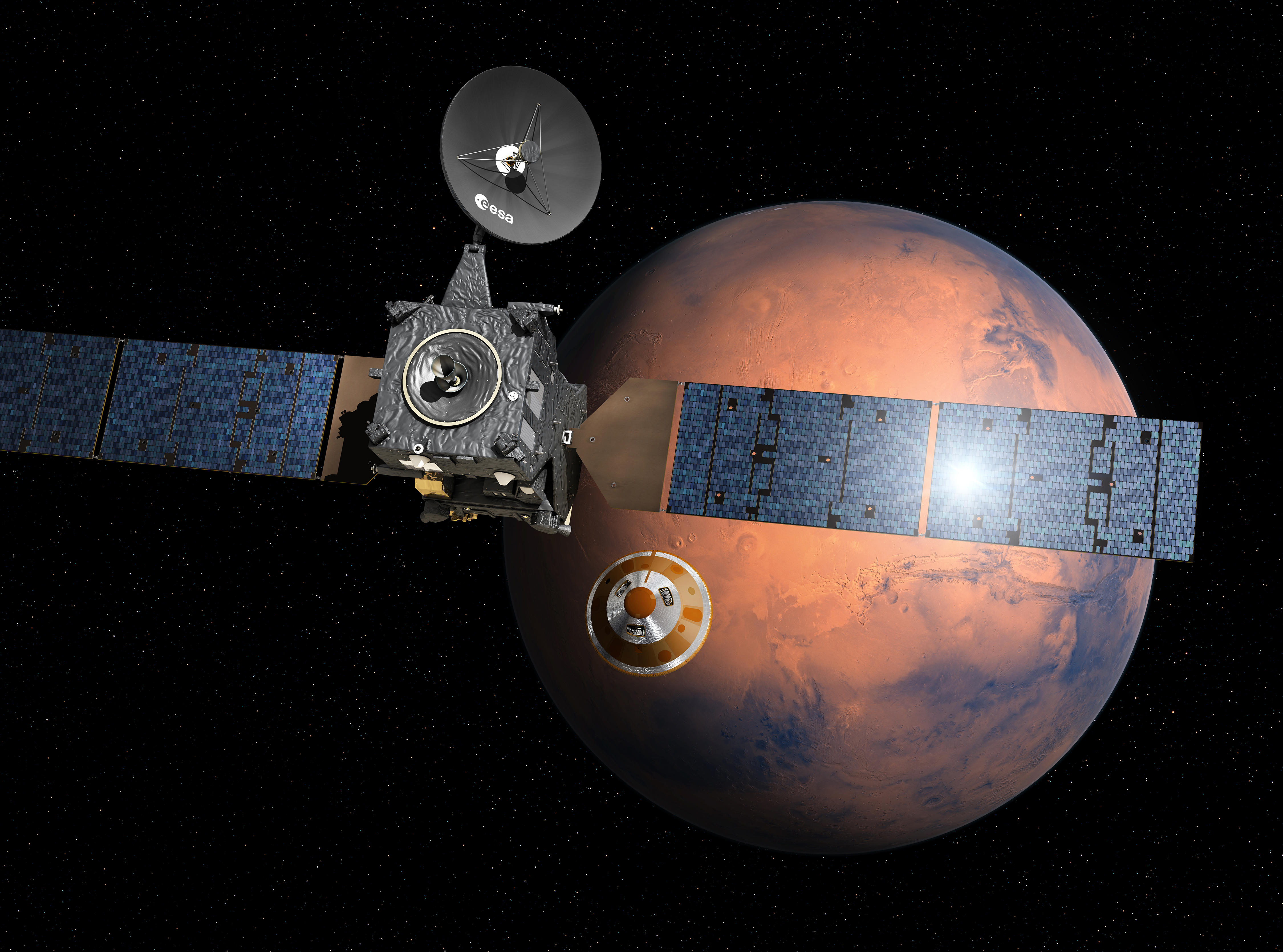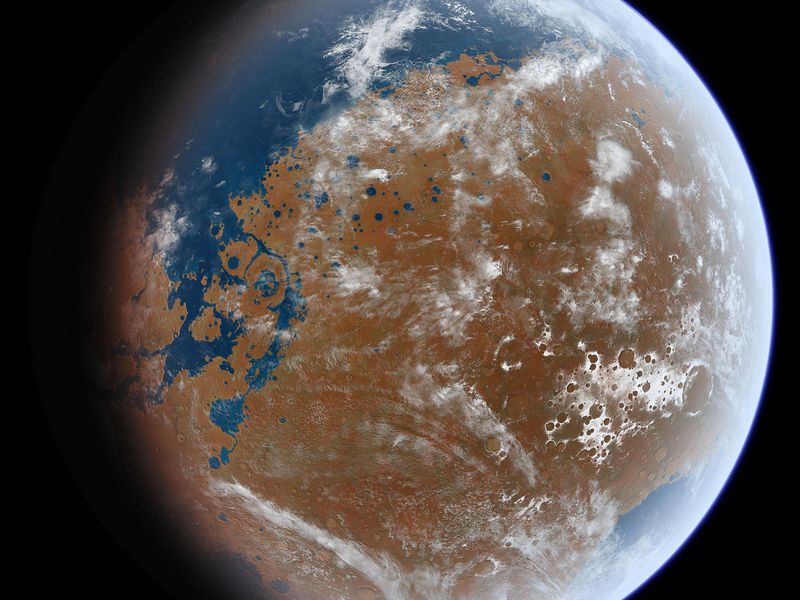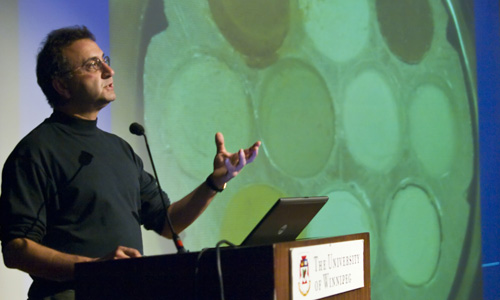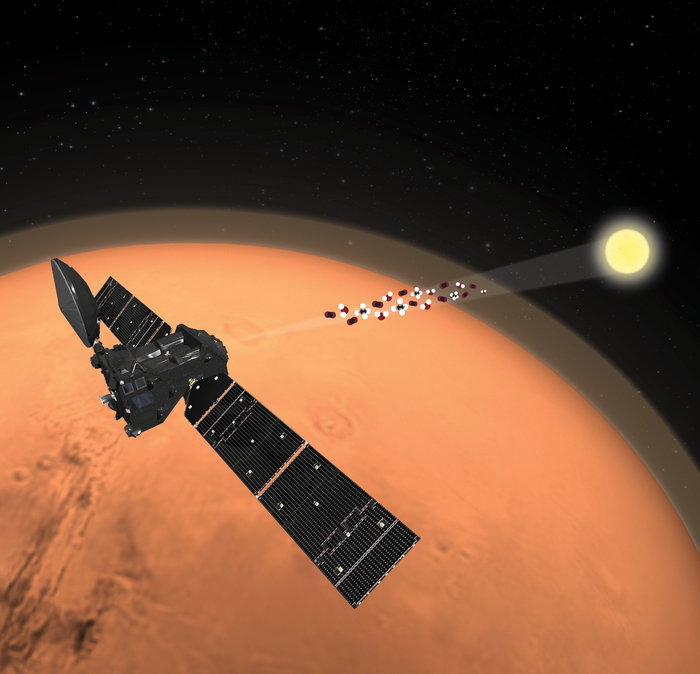
ExoMars – Artist’s impression of Schiaparelli separating from Trace Gas Orbiter. Credit: European Space Agency
Why are Earthlings so obsessed with Mars? They want to know whether life existed on Mars some time in the past or whether life might still exist on Mars!
Of all the planets, Mars is the most Earth-like, but is still very different from the Earth. Mars is colder, drier, and has a much thinner atmosphere. However, scientists think that as we go further back in time, Mars and Earth become more similar to each other. Life arose on Earth around 3 billion years ago, and at that time Mars was much more Earth-like. What that means is that even though Mars is pretty inhospitable today, it was more hospitable in the past and so life could have arisen on Mars like it did on the Earth.

An artist’s interpretation of what ancient Mars may have looked like (Ittiz via Wikimedia Commons CC-BY-3.0)

Dr. Ed Cloutis is a Professor in the Department of Geography at the University of Winnipeg. He is Director of HOSERLab, which uses laboratory equipment to reproduce the surface conditions on Mars and study how rocks and organic materials may change when exposed on the surface of Mars. He is a co-investigator on a number of present and future Mars missions.
Canada may not be able to fly its own mission to Mars because that is incredibly expensive. However, Canadian scientist and engineers are involved in almost all current and future Mars missions. This allows Canada to explore Mars at a fraction of the cost of having its own mission.
Canada is part of the Russian and European Space Agency ExoMars Trace Gas Orbiter (TGO) mission. This is an orbiting satellite around Mars that is searching for signs of past or present life on Mars. ExoMars TGO studies the Mars atmosphere for traces of gases that are produced by life, such as methane.
Canadian scientists are also using data from the ExoMars mission to study dust kicked up by dust storms that is in the atmosphere of Mars to find out whether the dust either contains biological molecules or contains compounds that are essential for life, such as boron-containing compounds.

Artist impression of the ExoMars Trace Gas Orbiter (TGO) analyzing the martian atmosphere.Credit: European Space Agency
Using the scientific instruments on TGO to search for evidence of life in the dust in the Martian atmosphere is difficult since the instruments were not designed for this. However, scientists are working hard to make this possible.
The knowledge and experience gained by studying Martian atmospheric dust is also being applied to monitoring the health of Earth’s atmosphere from space.


